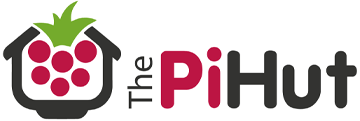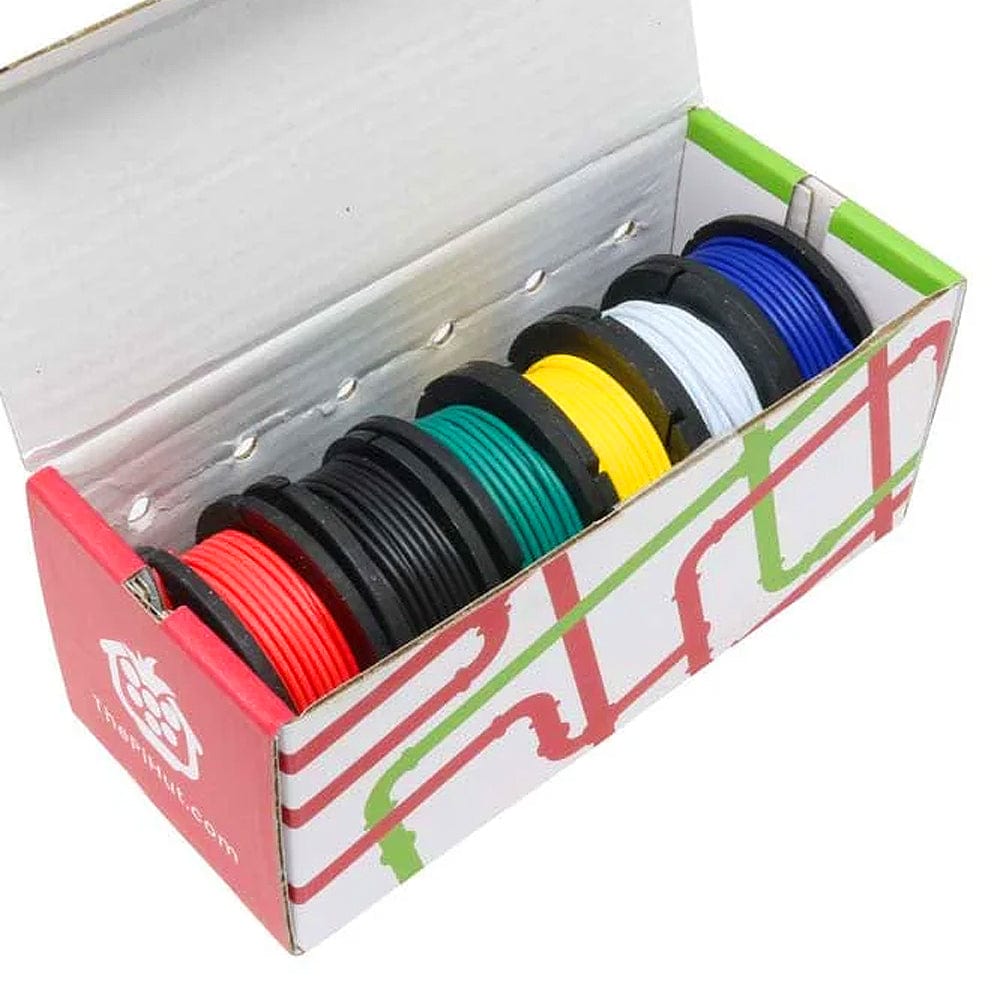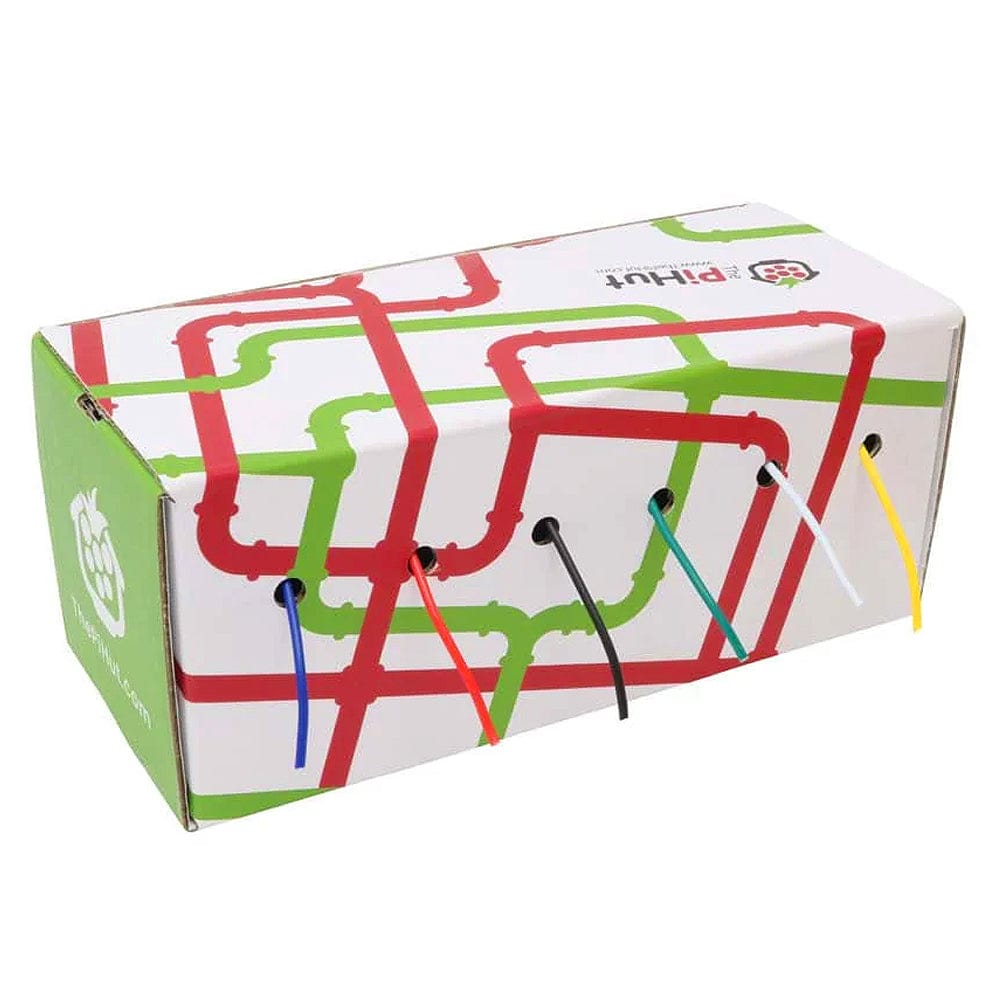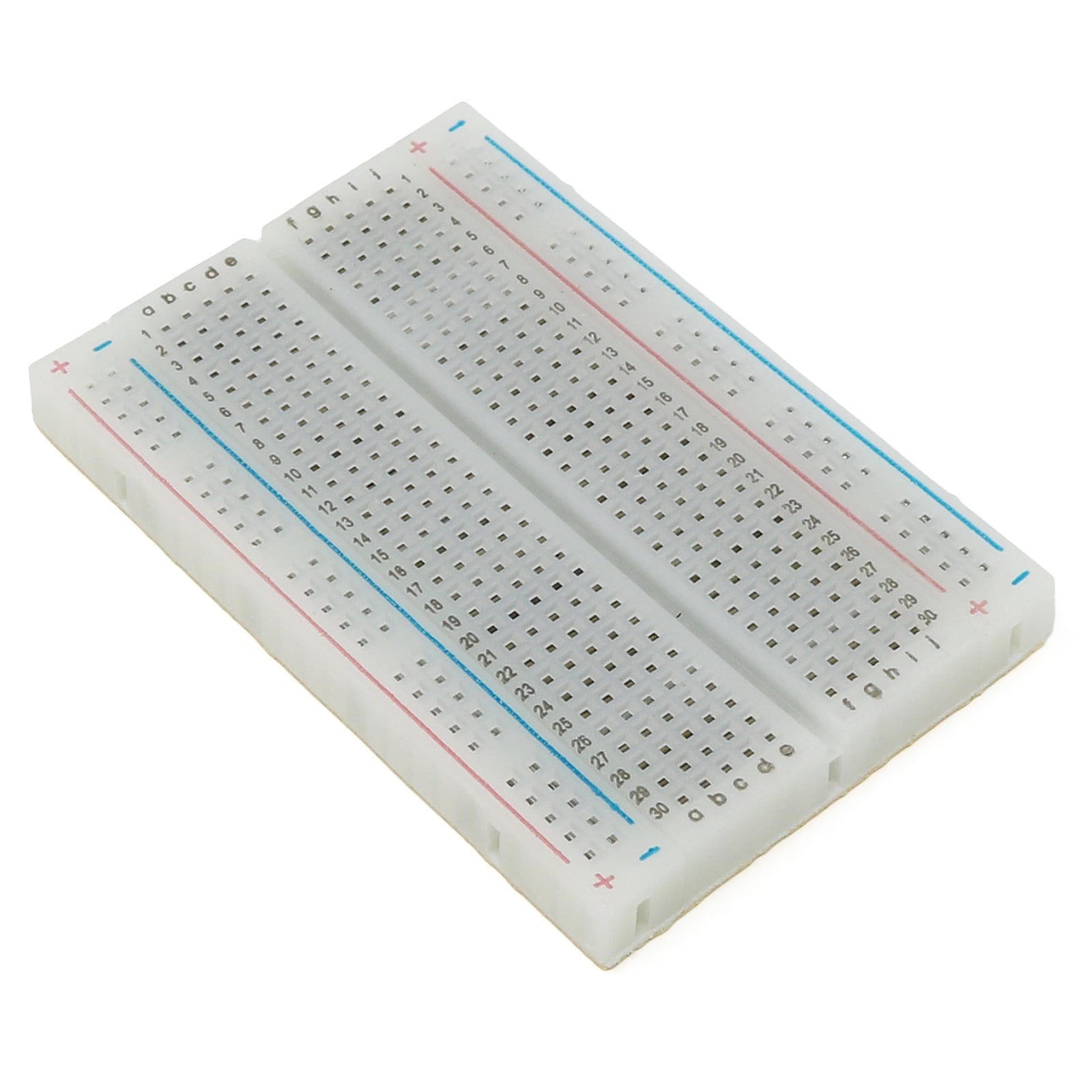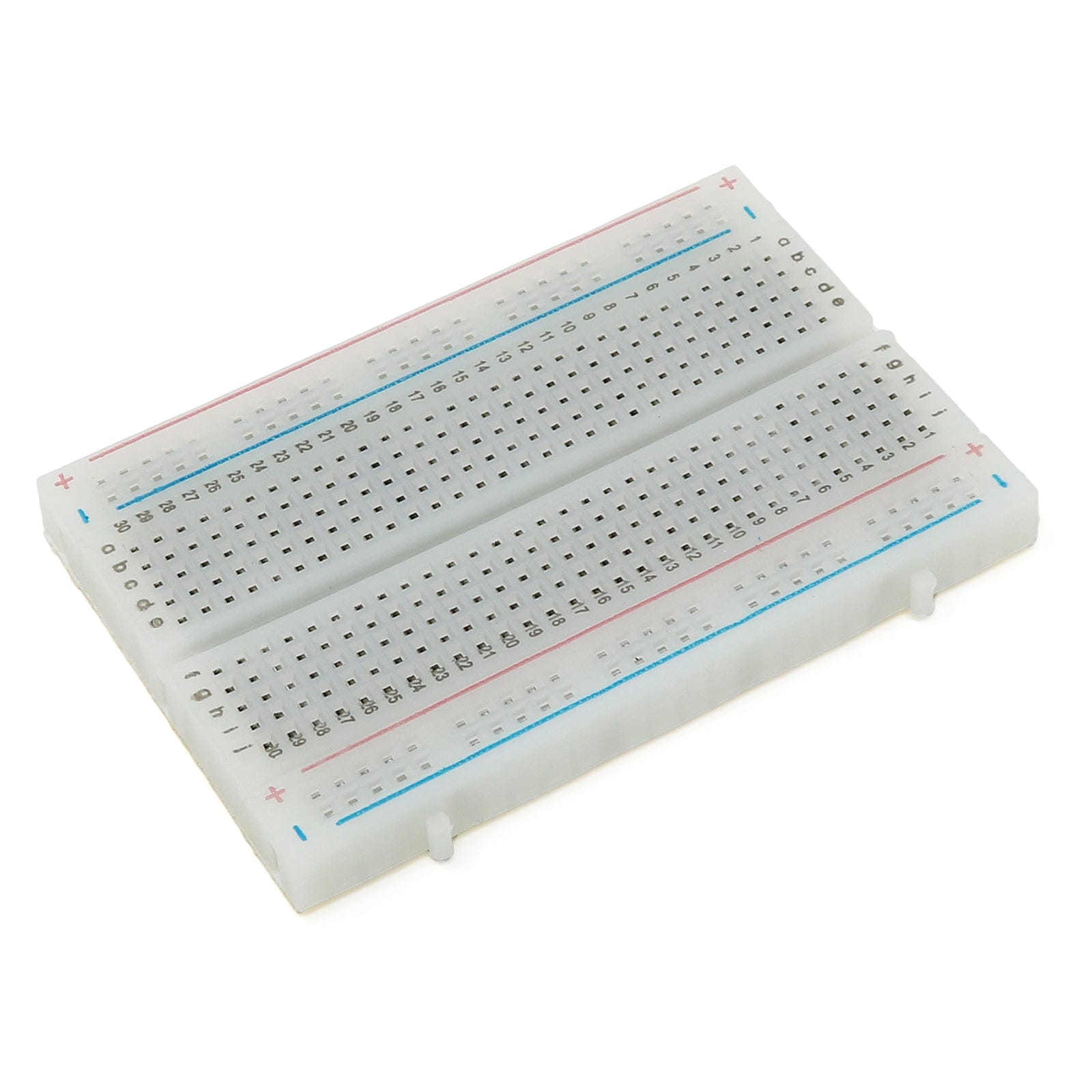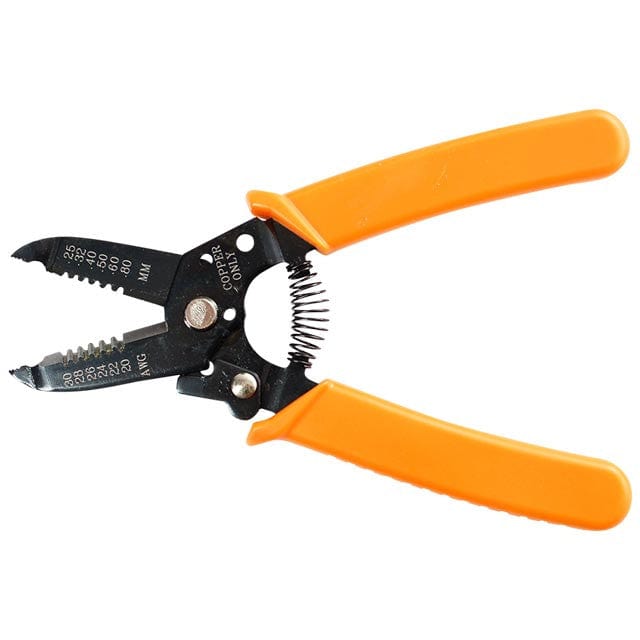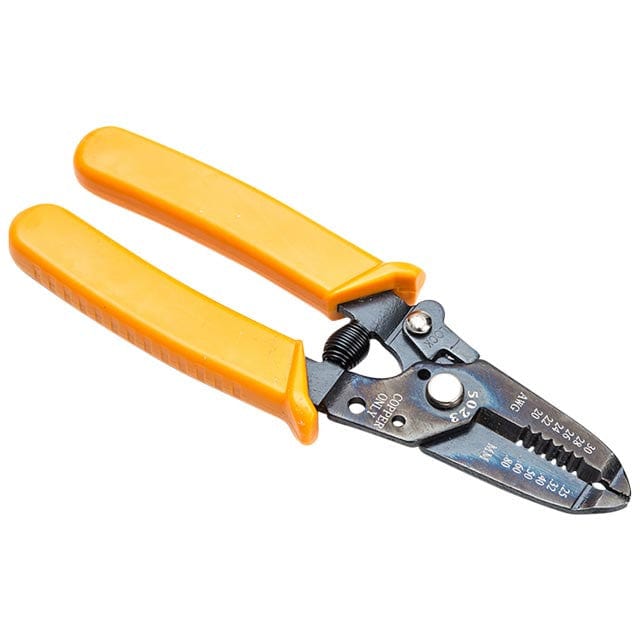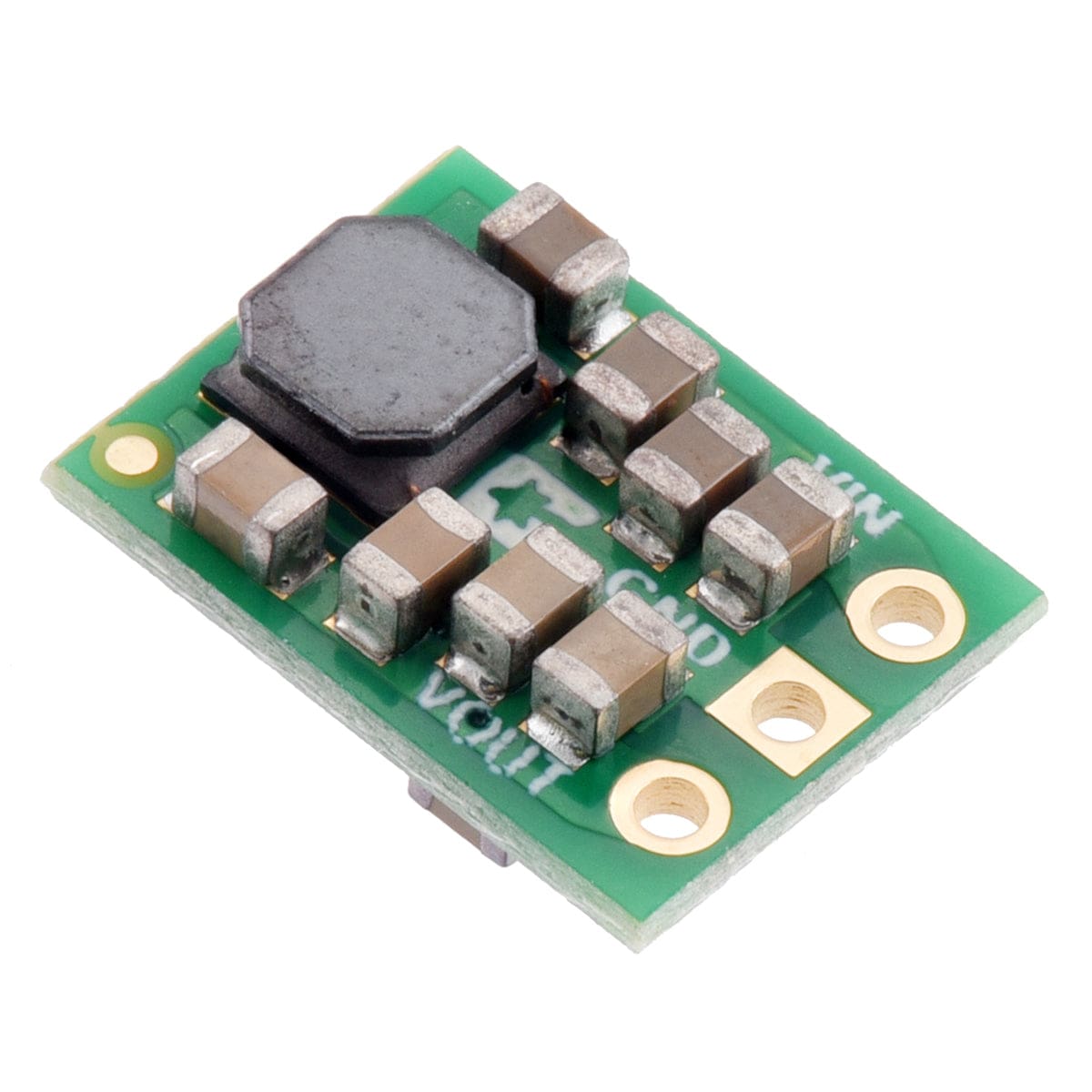
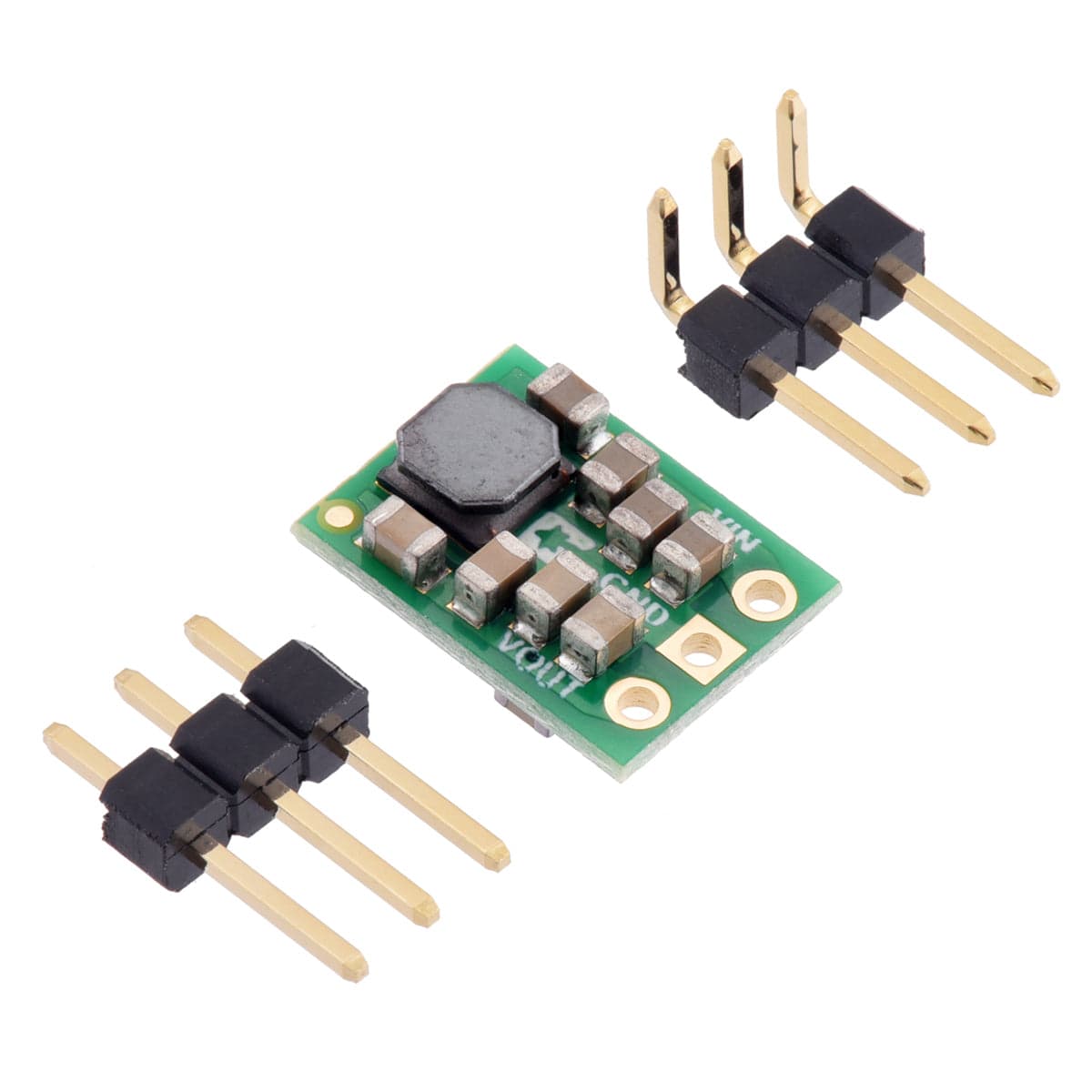
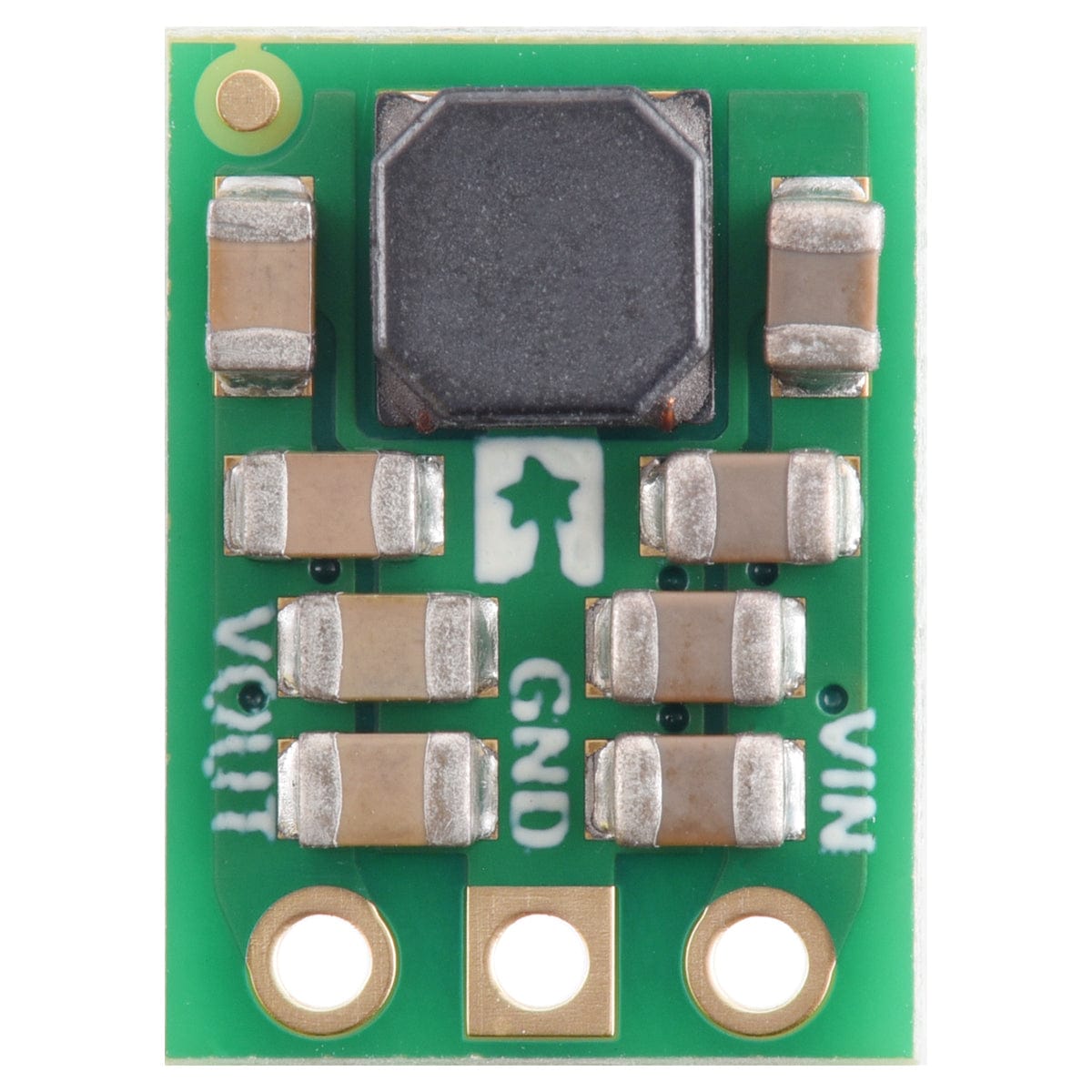
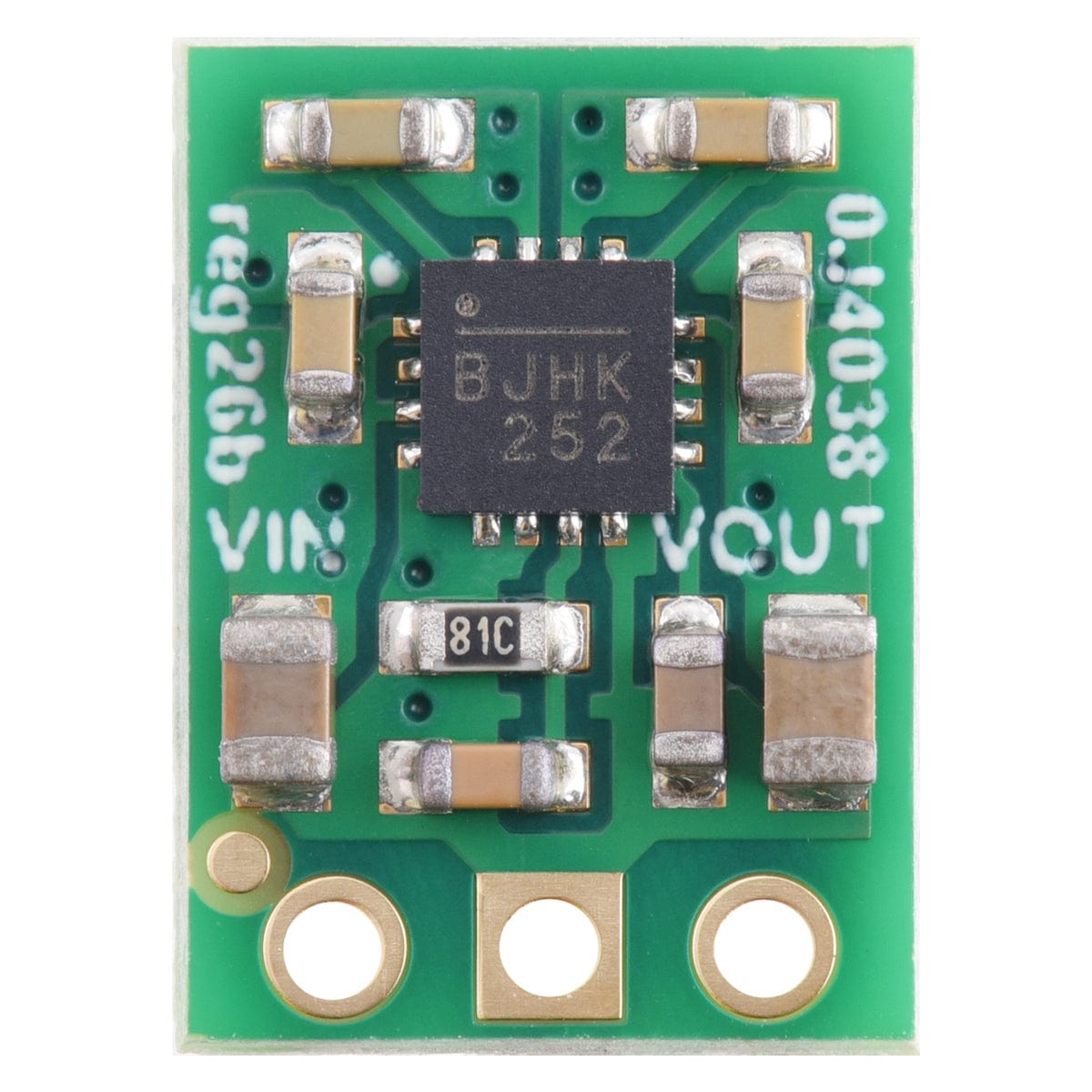
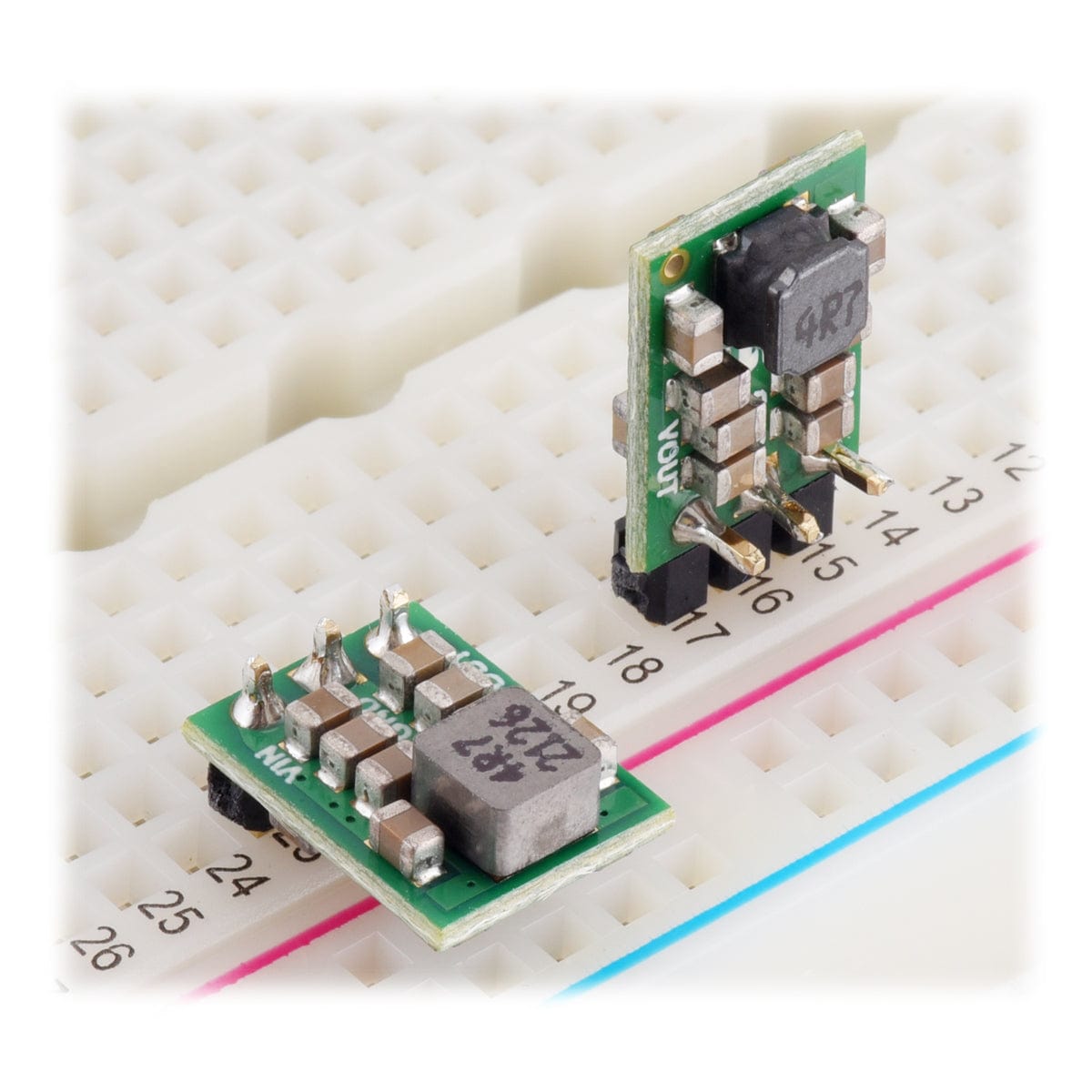
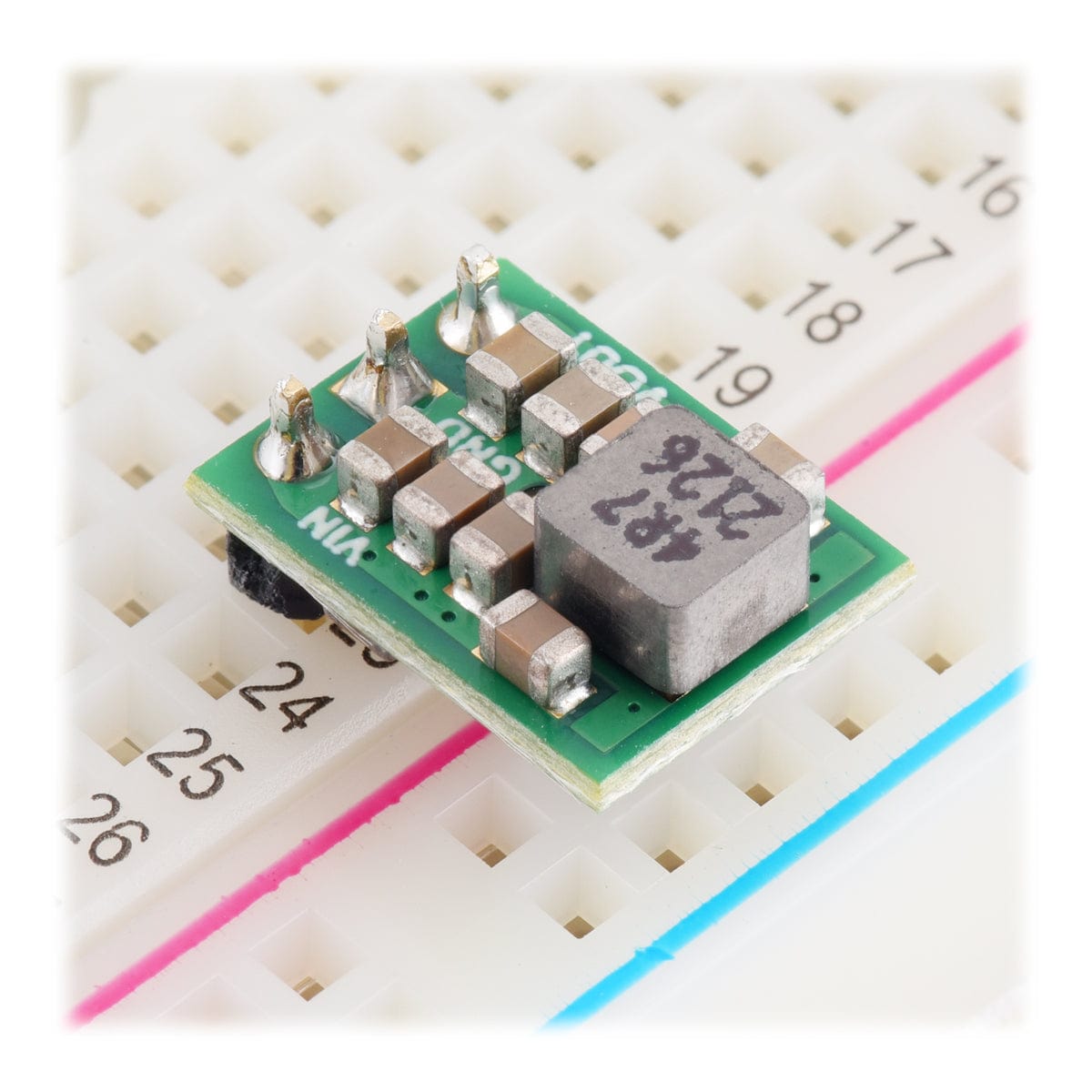
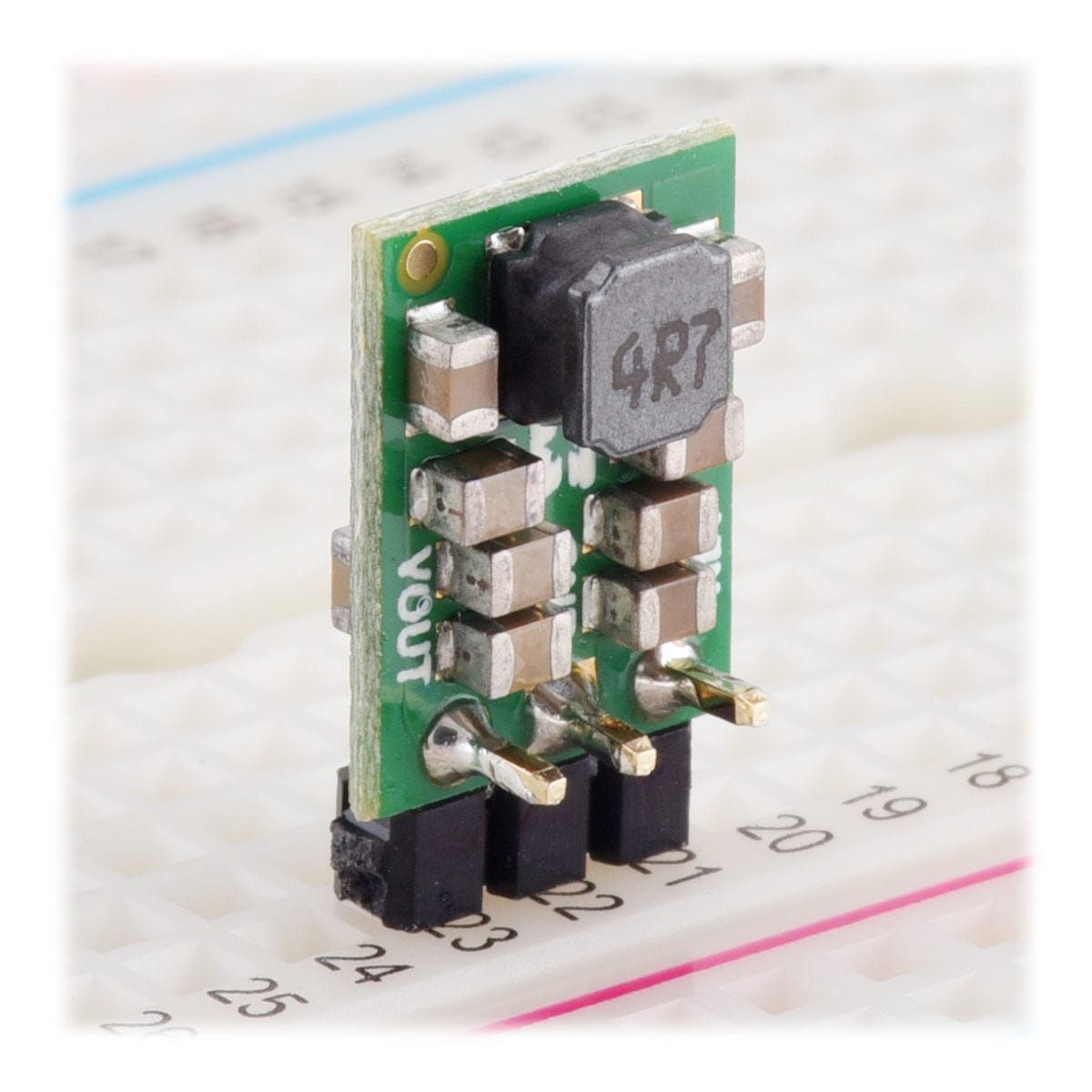
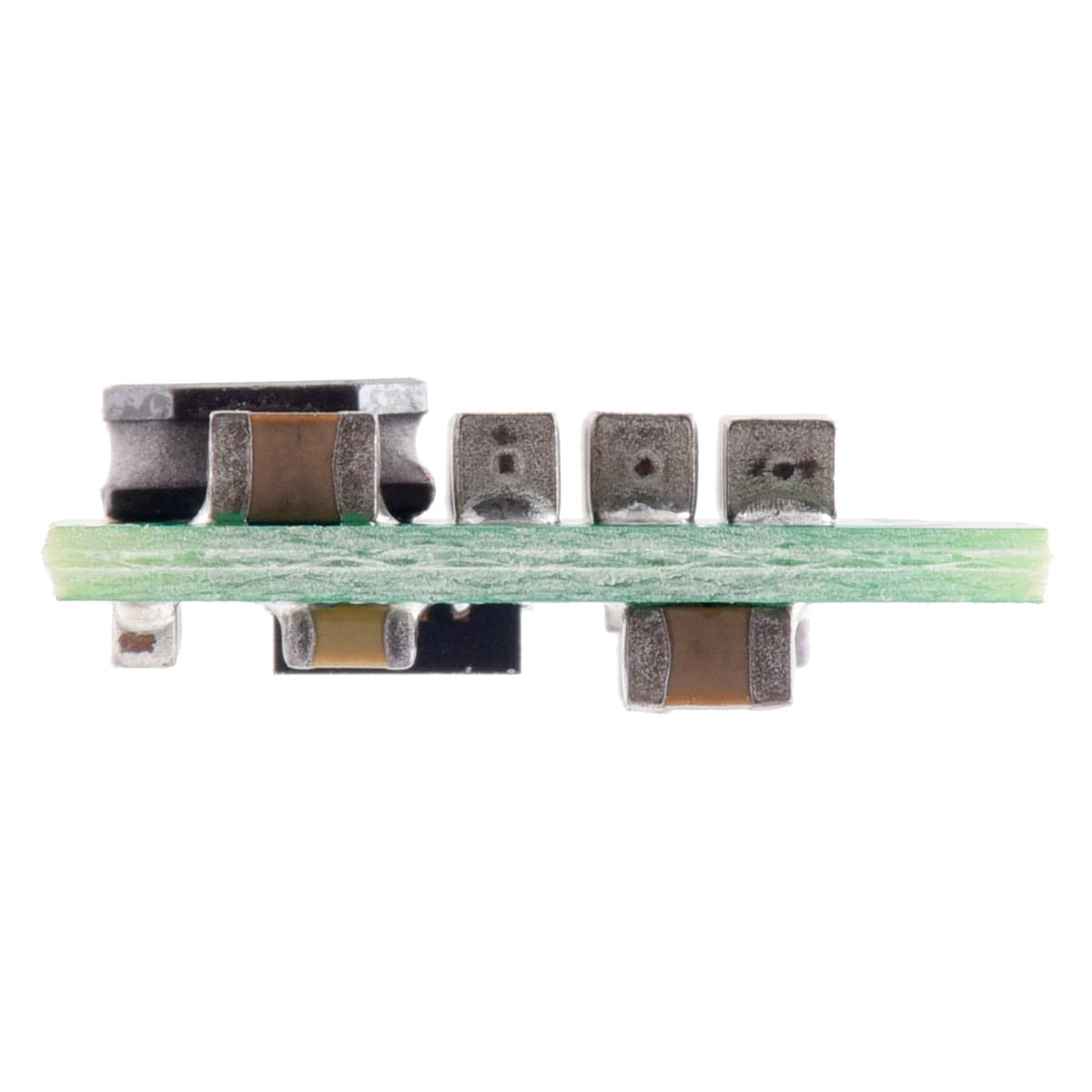
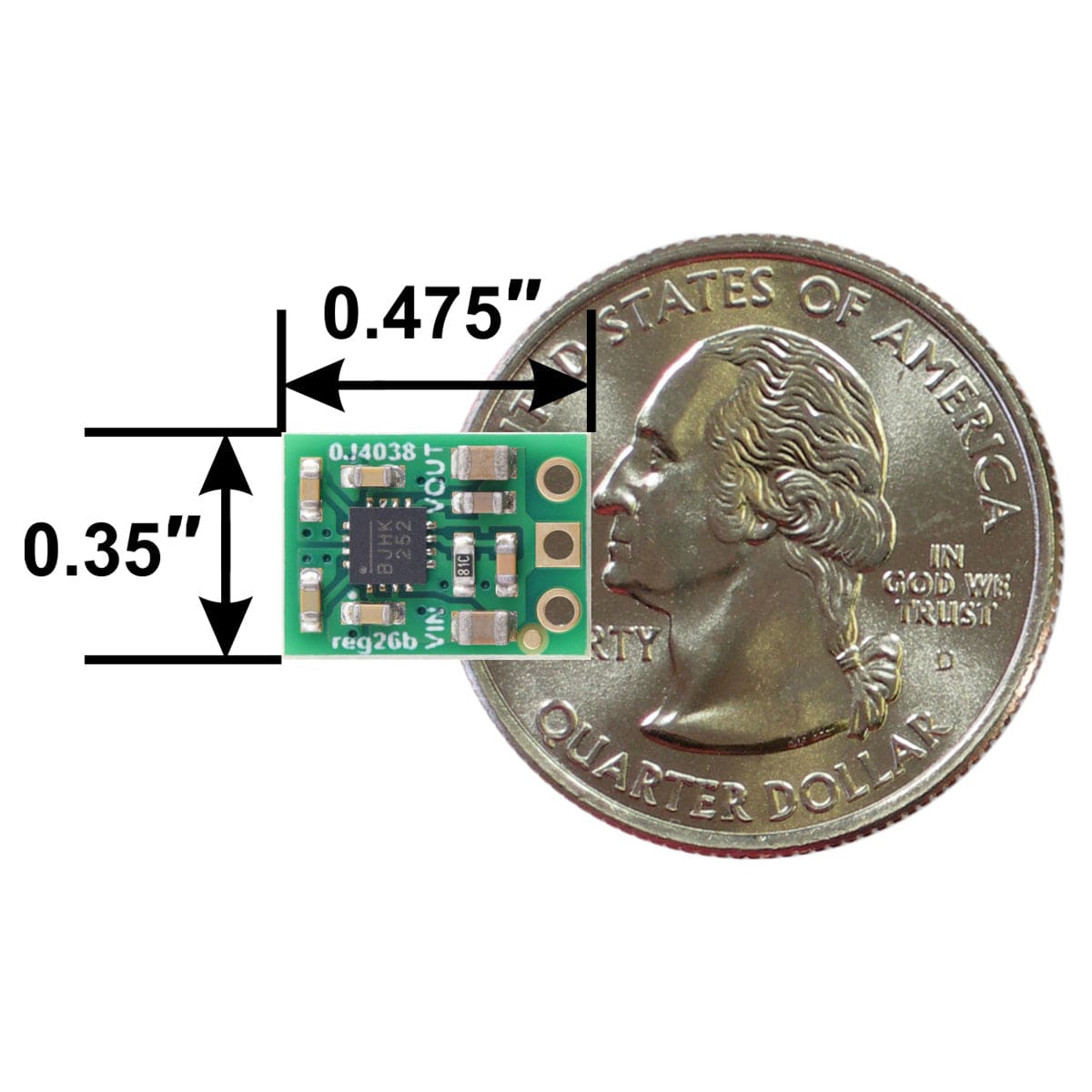
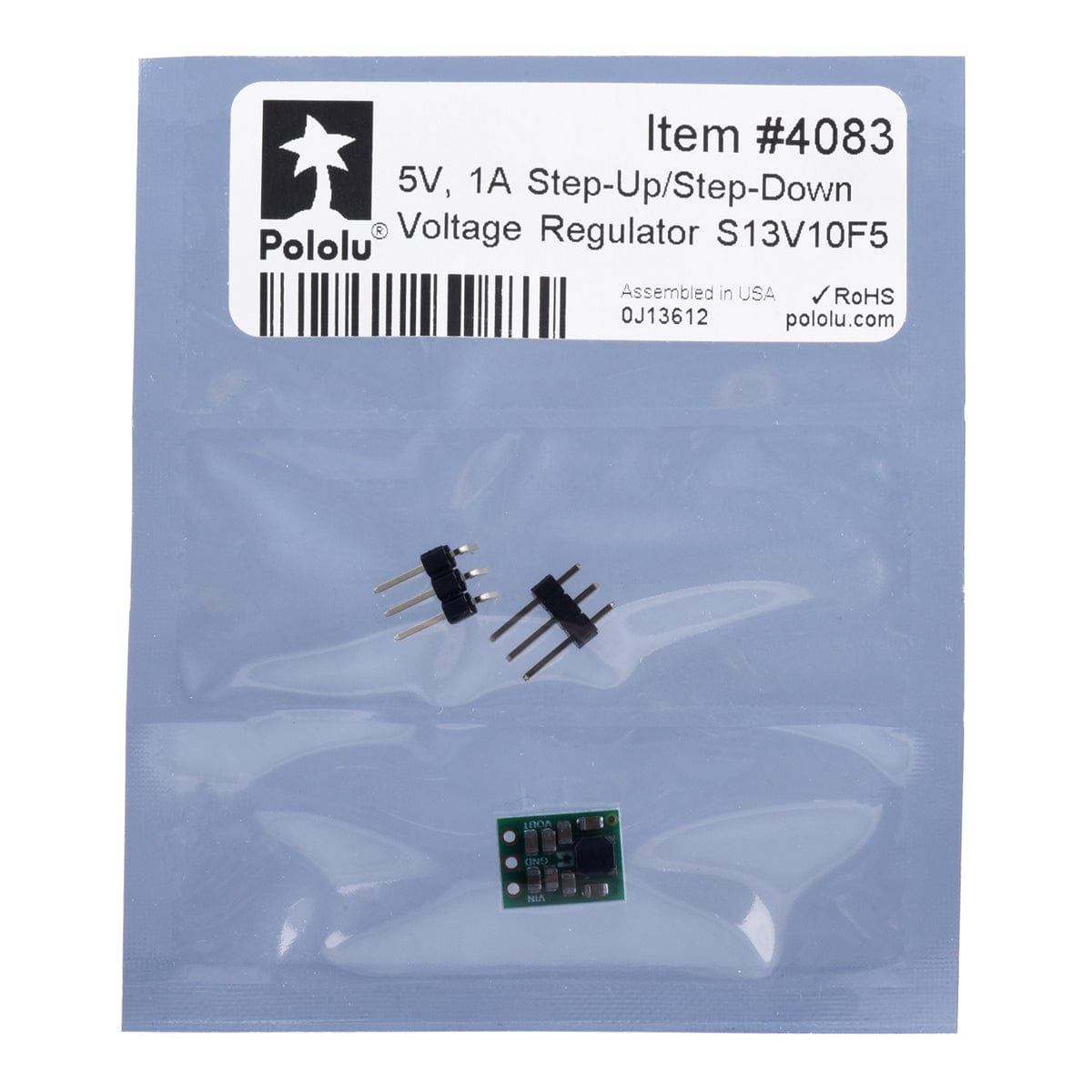
Login / Signup
Cart
Your cart is empty
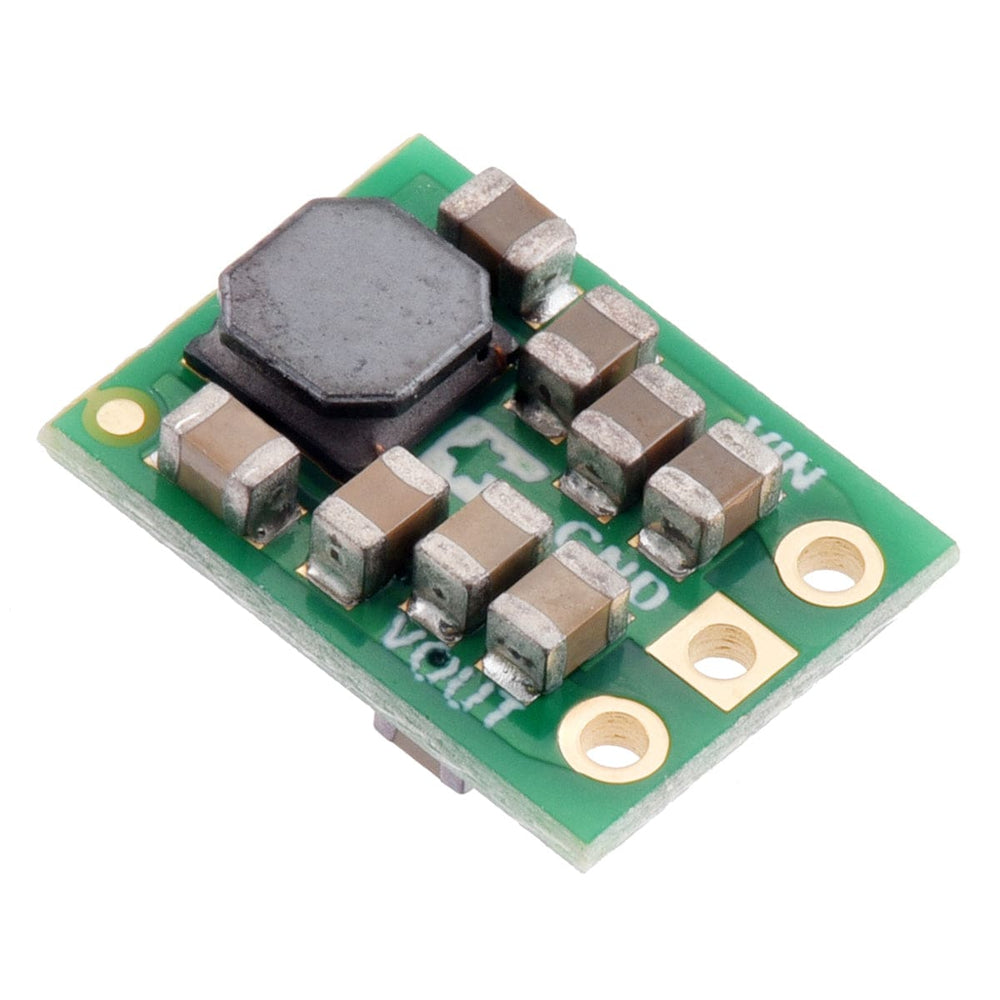
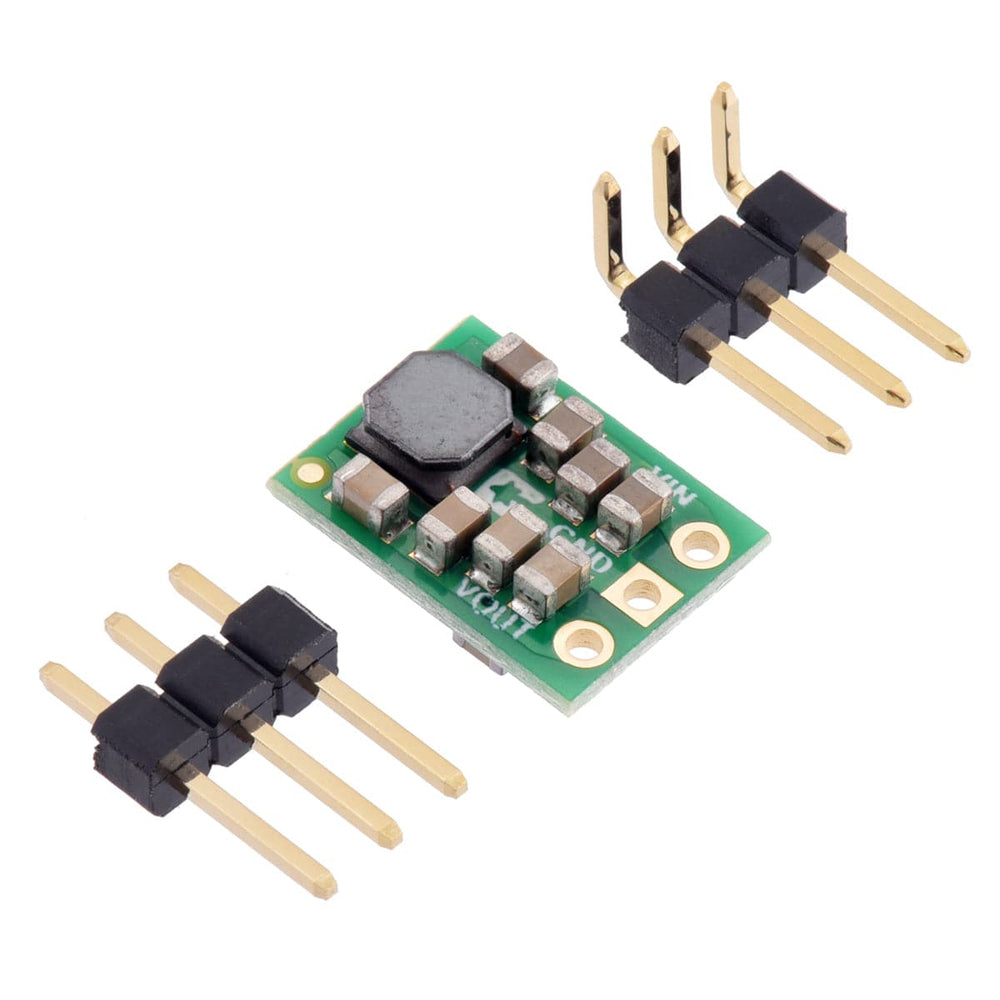
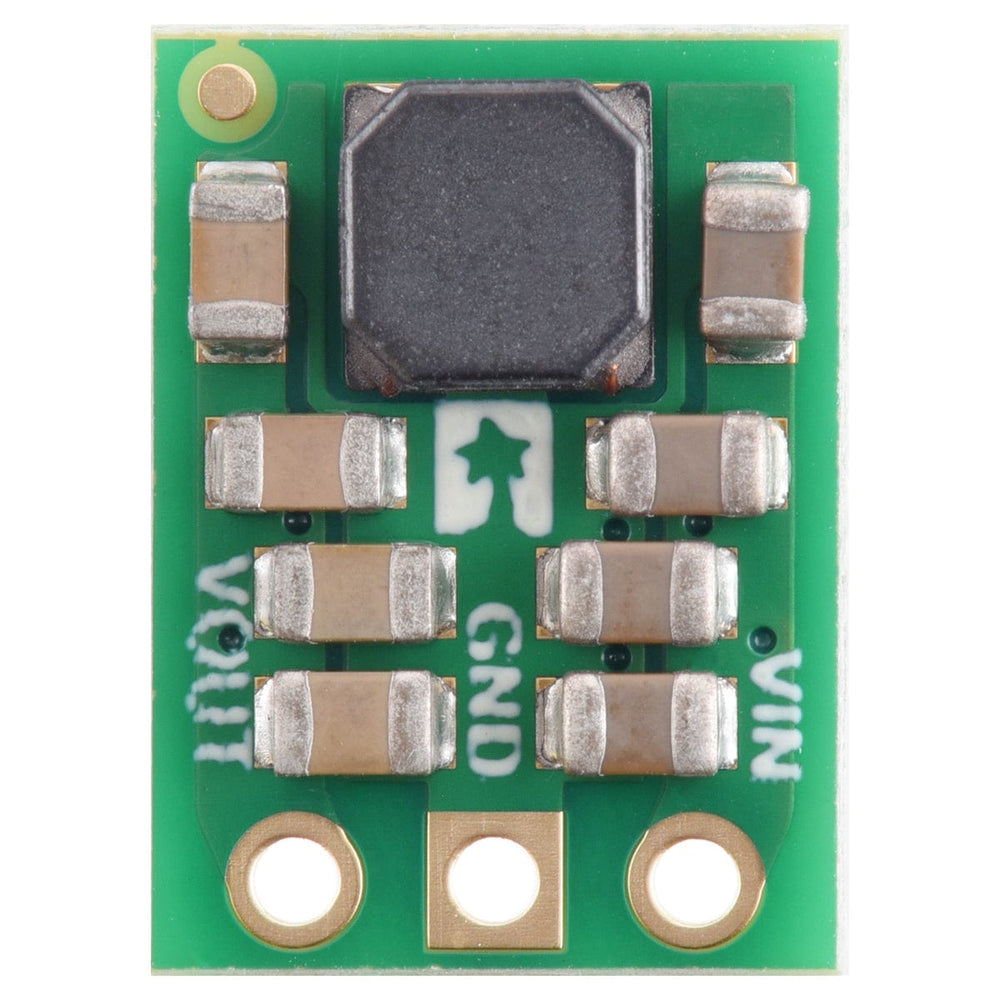
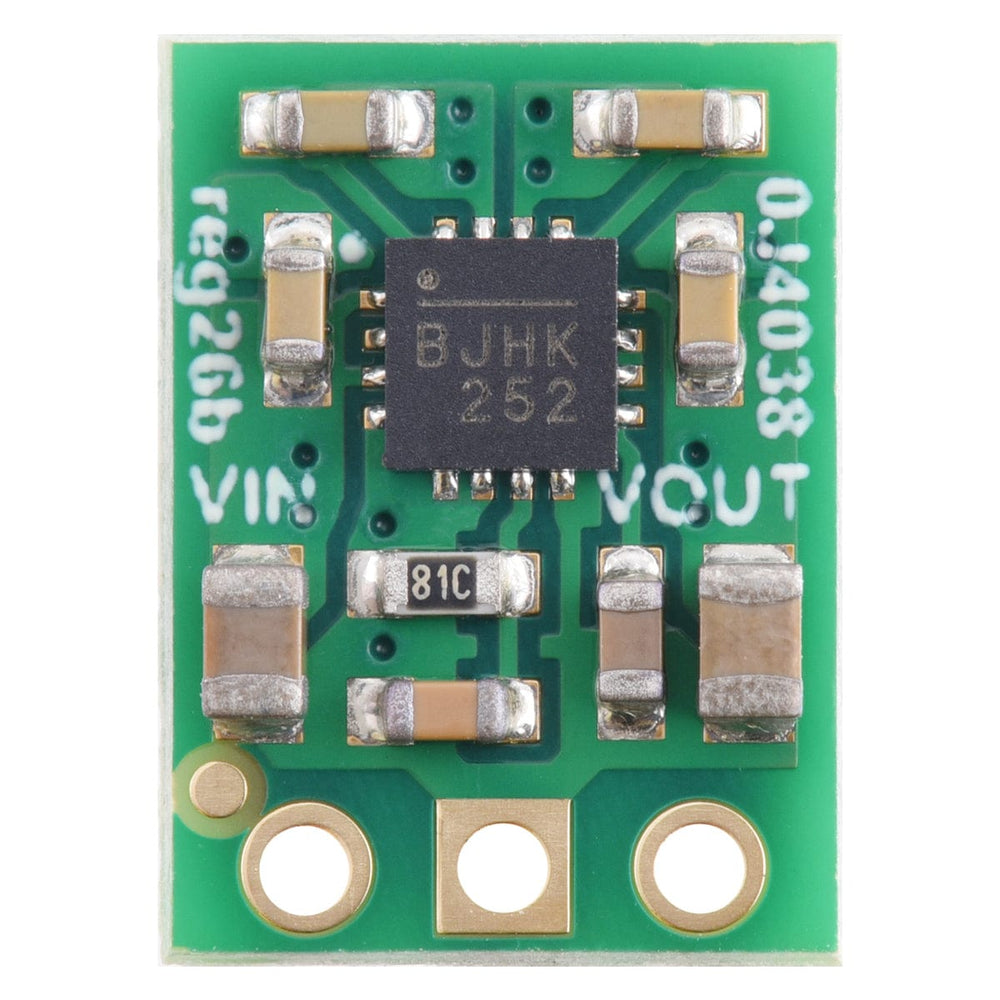
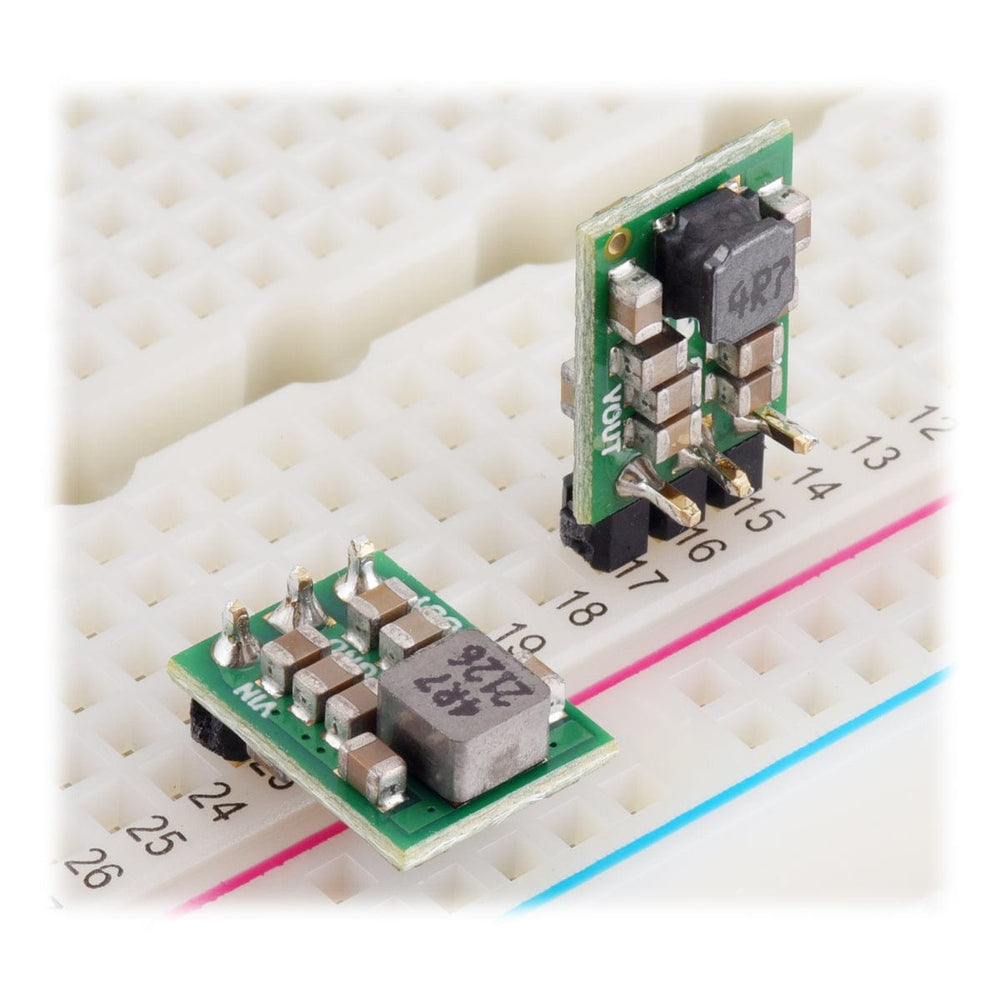
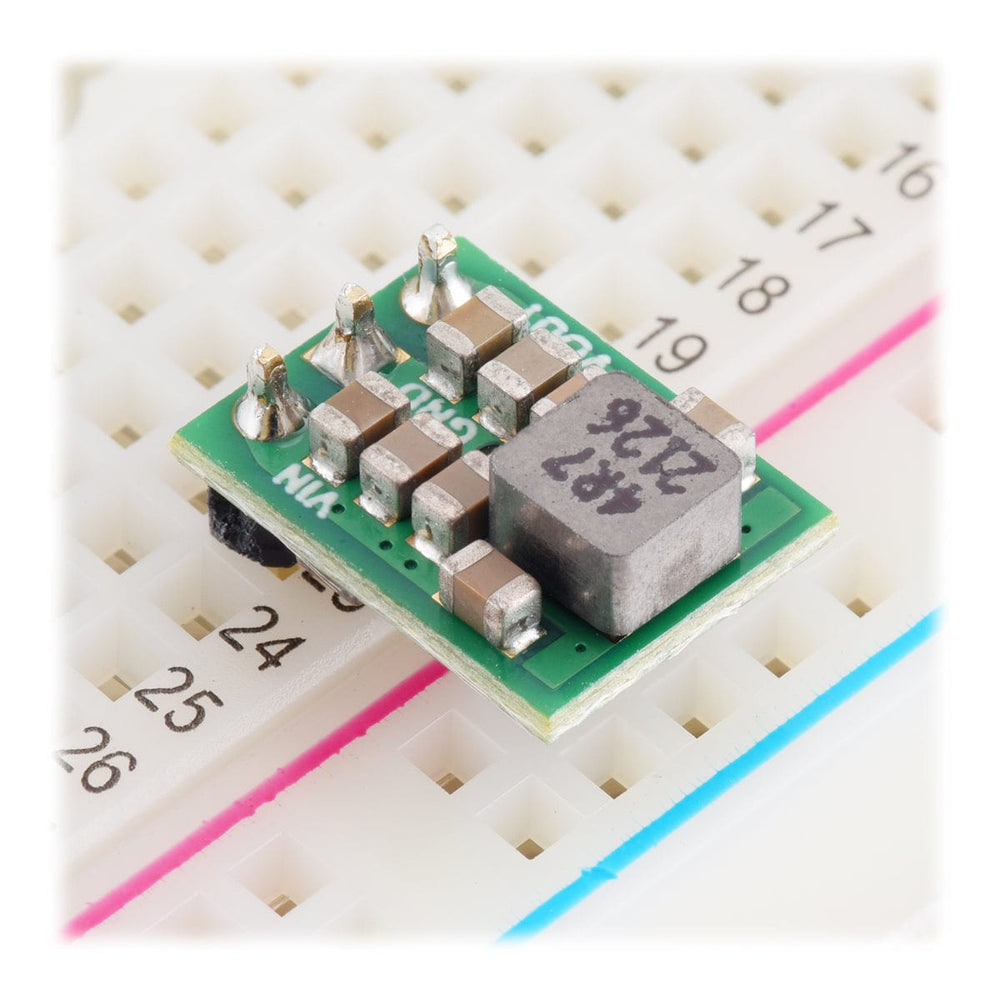
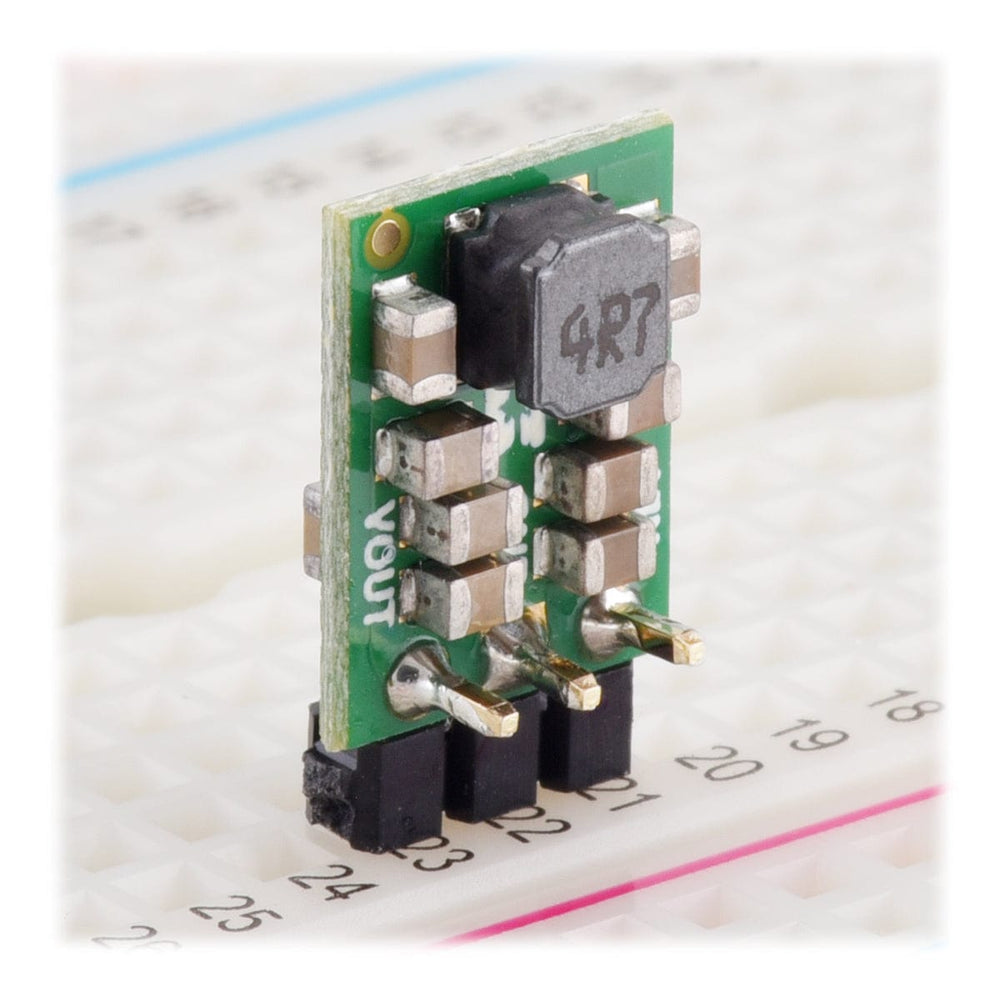
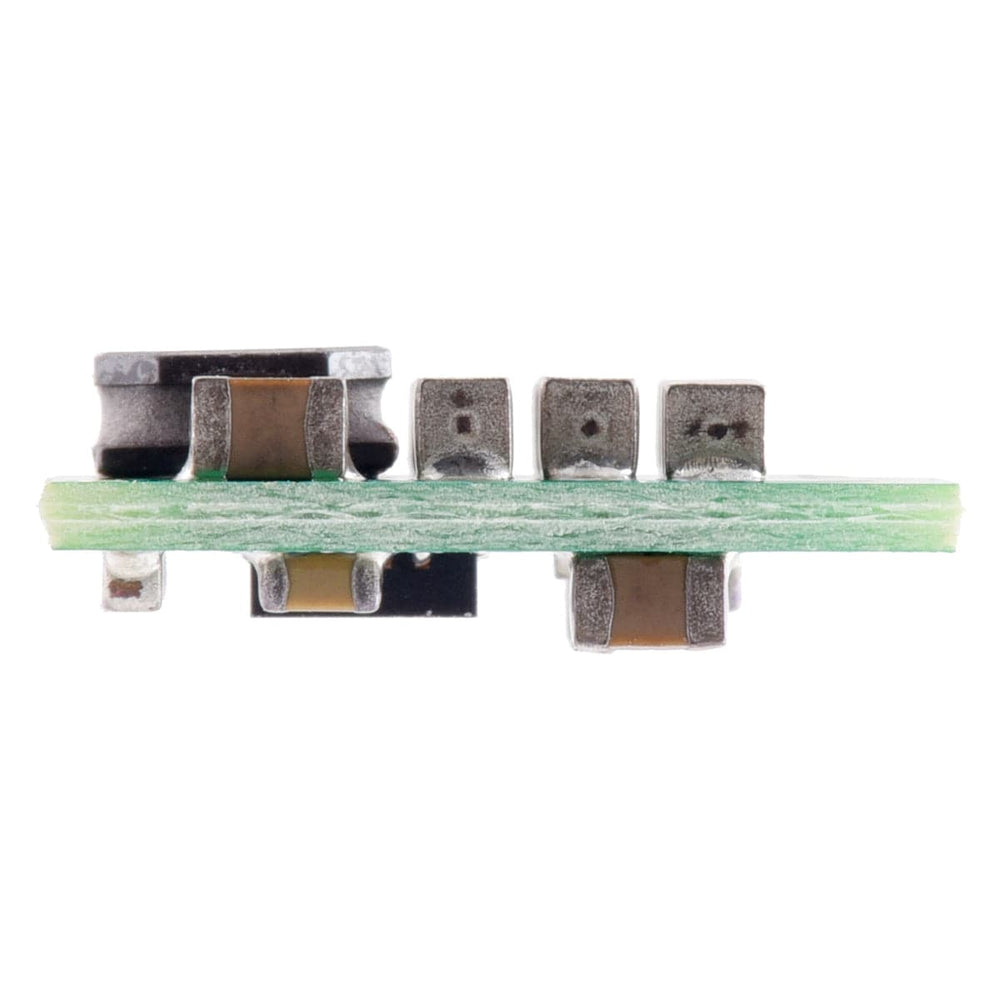
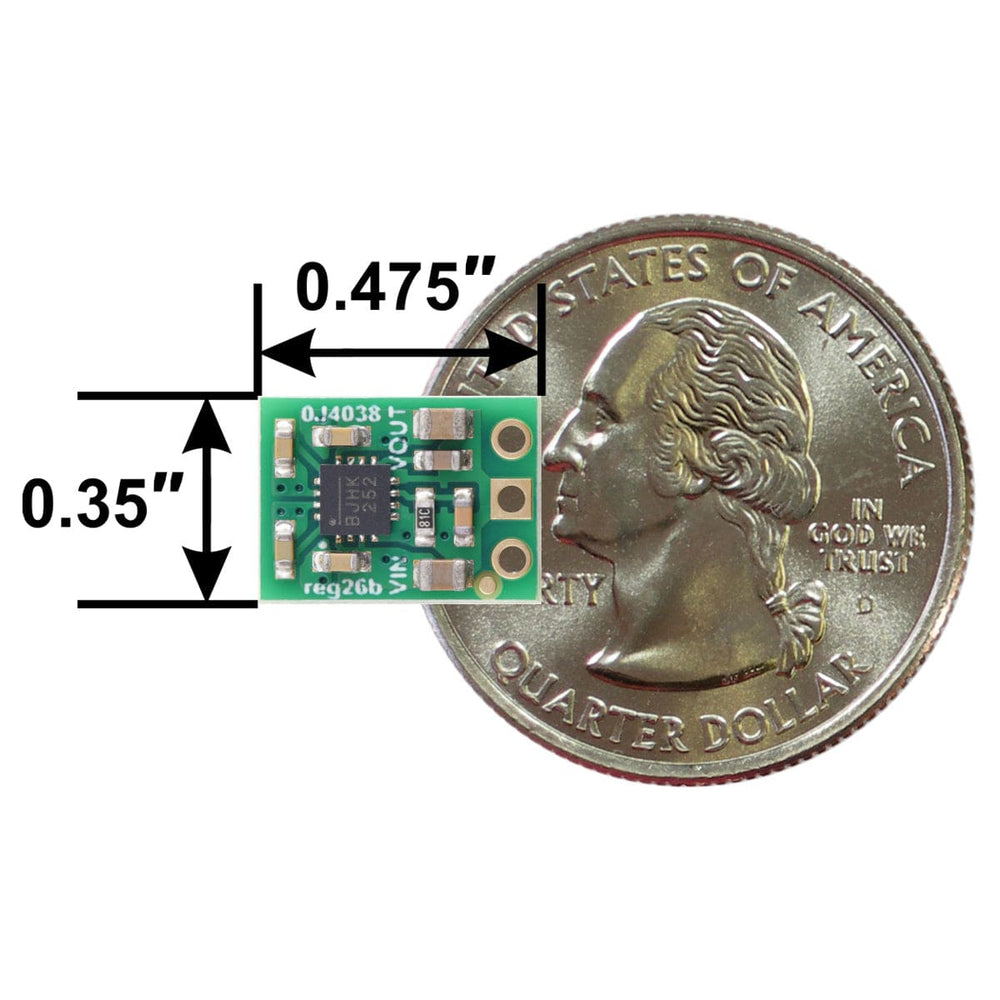
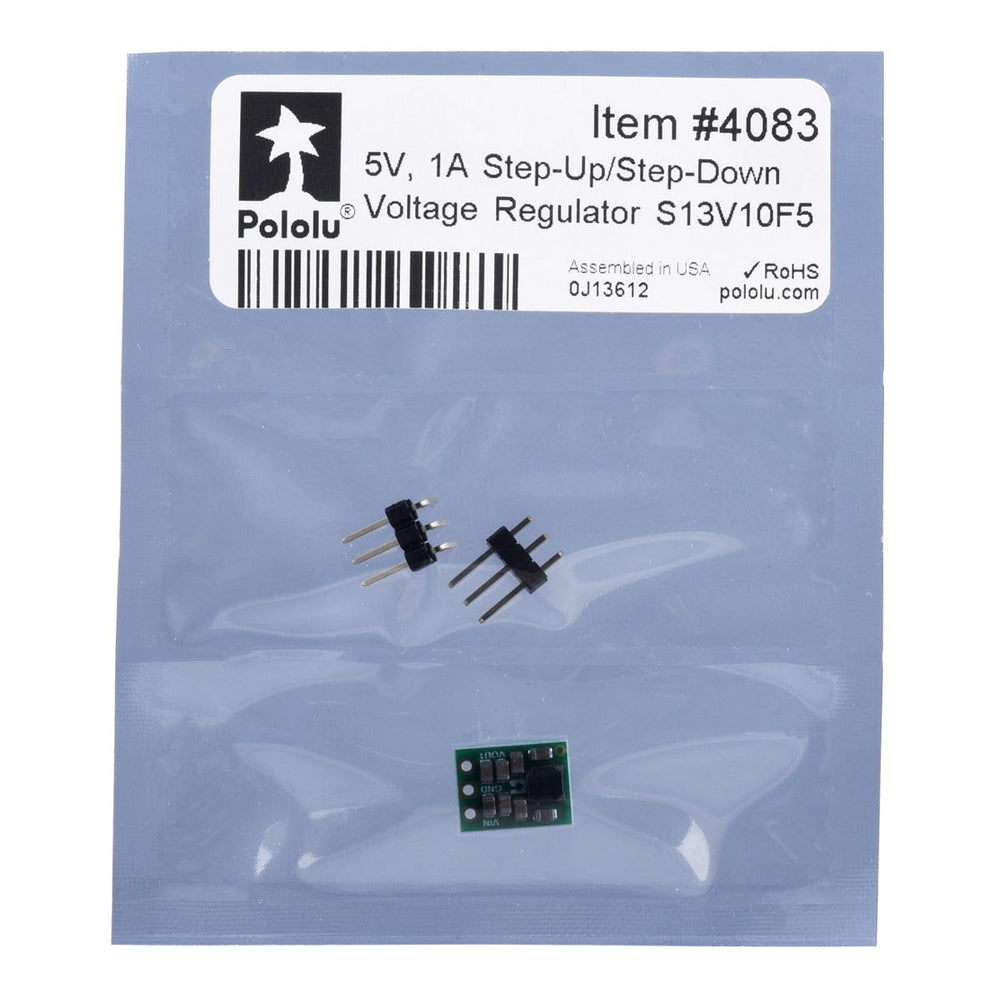
This powerful synchronous switching step-up/step-down regulator from Pololu efficiently produces 5V 1A output from input voltages between 2.8V and 22V.
Its ability to convert both higher and lower input voltages makes it useful for applications where the power supply voltage can vary greatly, as with batteries that start above but discharge below 5V.
The board measures 0.35″ × 0.475″, has a typical efficiency of 85% to 95%.
Warning: During normal operation, this product can get hot enough to burn you. Take care when handling this product or other components connected to it.
The S13VxF5 family of efficient switching regulators (also called switched-mode power supplies (SMPS) or DC-to-DC converters) use a buck-boost topology to convert both higher and lower input voltages to a regulated 5V output. They take input voltages from 2.8V to 22V and increase or decrease them as necessary, offering a typical efficiency of over 85% and typical continuous output currents between 1A and 3A (this particular model is 1A). The flexibility in input voltage offered by this family of regulators is especially well-suited for battery-powered applications in which the battery voltage begins above 5V and drops below as the battery discharges. Without the typical restriction on the battery voltage staying above the required voltage throughout its life, new battery packs and form factors can be considered.
The regulators have an under-voltage lockout, output over-voltage protection and over-current protection. A thermal shutdown feature also helps prevent damage from overheating and a soft-start feature limits the inrush current and gradually ramps the output voltage on startup.
Warning: During normal operation, this product can get hot enough to burn you. Take care when handling this product or other components connected to it.
| Minimum operating voltage | 2.8V |
| Maximum operating voltage | 22V |
| Continuous output current | 1A |
| Output voltage | 5V |
| Reverse voltage protection? | N |
| Maximum quiescent current | 20mA |
| Output type | Fixed 5V |
| Size | 0.35″ × 0.475″ × 0.17″ |
| Weight | 0.6 g |
The step-up/step-down regulator has just three connections: the input voltage (VIN), ground (GND), and output voltage (VOUT). The input voltage, VIN, powers the regulator. Voltages between 2.8 V and 22 V can be applied to VIN. VOUT is the regulated output voltage. These through-holes are arranged with a 0.1″ spacing along the edge of the board for compatibility with standard solderless breadboards and perfboards and connectors that use a 0.1″ grid.
The efficiency of a voltage regulator, defined as (Power out)/(Power in), is an important measure of its performance, especially when battery life or heat are concerns.

The maximum achievable output current of the regulator varies with the input voltage but also depends on other factors, including the ambient temperature, airflow, and heat sinking. The graph below shows the maximum output currents that the regulators in the S13VxF5 family can deliver continuously at room temperature in still air and without additional heat sinking.
Warning: During normal operation, this product can get hot enough to burn you. Take care when handling this product or other components connected to it.

The quiescent current is the current the regulator uses just to power itself, and the graph below shows this as a function of the input voltage.

When connecting voltage to electronic circuits, the initial rush of current can cause voltage spikes that are much higher than the input voltage. If these spikes exceed the regulator’s maximum voltage, the regulator can be destroyed.
If you are connecting more than about 15V, using power leads more than a few inches long, or using a power supply with high inductance, we recommend soldering a 33 μF or larger electrolytic capacitor close to the regulator between VIN and GND. The capacitor should be rated for at least 35V.
Along with the board, a 3×1 straight male header strip and a 3×1 right-angle male header strip are included, and you can solder in the one that gives you your desired board orientation.
Alternatively, you can solder wires directly to the board for the most compact installations.










